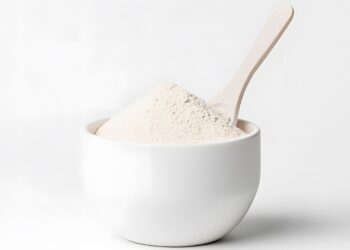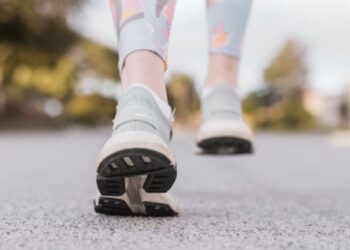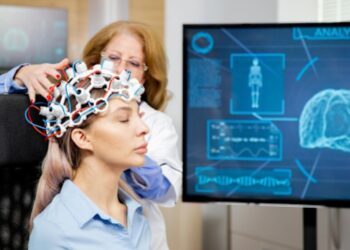Imagine the crushing disappointment of a young soccer player sidelined by a sudden and debilitating backache after a seemingly innocuous practice session. This scenario is all too familiar for many athletes, particularly those participating in high-impact sports. Lumbar disc herniation, a condition where the soft inner material of a spinal disc bulges or ruptures, is a common culprit behind back pain in athletes. While a herniated disc can certainly sideline you from your sport, it doesn’t have to be a permanent setback. With proper diagnosis, treatment, and a dedicated rehabilitation plan, athletes can recover from a lumbar disc herniation and return to their sport stronger than ever.
Understanding Lumbar Disc Herniation: The Injured Athlete’s Guide
The lumbar spine is the lower portion of your back and consists of five vertebrae stacked on top of each other. These vertebrae are separated by intervertebral discs, which act as cushions and shock absorbers, allowing your spine to move with flexibility. A lumbar disc herniation occurs when the tough outer layer of an intervertebral disc weakens or tears, allowing the soft inner material (nucleus pulposus) to protrude. This protruding disc material can press on nearby spinal nerves, causing a variety of uncomfortable and debilitating symptoms.
Recognizing the Signs and Seeking Medical Attention
If you’re an athlete experiencing persistent lower back pain, especially after a sports injury, it’s crucial to pay attention to the accompanying symptoms. Lumbar disc herniation can cause pain that radiates down the leg, a condition known as sciatica. This pain can be described as sharp, burning, or shooting and can worsen with certain movements like coughing or sitting for extended periods. Other symptoms associated with lumbar disc herniation include weakness, numbness, and tingling in the buttocks, legs, or feet.
Ignoring these symptoms or attributing them to simple muscle strain can be detrimental. Early diagnosis and treatment are essential for a successful recovery. Seek medical attention promptly if you experience persistent back pain or any of the associated symptoms of a lumbar disc herniation. A doctor specializing in sports medicine or a physician experienced in treating lumbar disc herniation new jersey can perform a thorough physical examination and order diagnostic tests like X-rays or an MRI scan to confirm the diagnosis.
Recovery Options for Athletes: Rest, Rehab, and Rejuvenation
The good news for athletes is that most cases of lumbar disc herniation can be treated effectively without surgery. Non-surgical treatments are typically the first line of defense and aim to reduce pain and inflammation while promoting healing. Resting your back might seem counterintuitive for an active athlete, but it’s crucial for allowing the herniated disc to heal.

However, complete inactivity can lead to muscle stiffness. Physical therapy is a cornerstone of recovery for athletes with lumbar disc herniation. A qualified physical therapist will develop a personalized exercise program focusing on strengthening core muscles and improving flexibility in the lower back and legs. These exercises will help stabilize the spine, improve balance, and reduce the risk of re-injury. Medications like anti-inflammatory drugs and muscle relaxants can also be used to manage pain and inflammation.
The Road to Recovery: Essential Tips for Athletes
While treatment options can help alleviate pain and promote healing, a successful recovery from a lumbar disc herniation requires dedication and commitment from the athlete. Here are some essential tips for athletes on the road to recovery:
- Prioritize Rest: While complete inactivity isn’t recommended, ensure you give your back adequate rest, especially during the initial stages of recovery. Avoid strenuous activity that could aggravate the herniation.
- Embrace Physical Therapy: Commit to attending physical therapy sessions regularly and diligently following the prescribed exercise program. Building core strength and improving flexibility are crucial for long-term back health.
- Maintain a Healthy Lifestyle: A healthy diet rich in fruits, vegetables, and whole grains provides your body with the essential nutrients needed for healing. Maintaining a healthy weight also reduces stress on your spine.
- Practice Good Posture: Maintaining good posture during daily activities and even while sleeping is vital for supporting your spine and preventing further strain.
- Listen to Your Body: Don’t push yourself too hard, too soon. Pay attention to your body’s signals and gradually increase activity levels as your pain improves.
Remember, recovering from a lumbar disc herniation is a process, and it takes time and patience. Be patient with yourself and celebrate small milestones along the way. Consulting with an orthopedic surgeon specializing in sports medicine can provide additional guidance and ensure you’re on the right track to a full recovery.
Preventing Future Injuries: Building a Strong Foundation
While a herniated disc can be a setback, it doesn’t have to be a recurring issue.

Here are some preventative measures athletes can take to minimize the risk of future lumbar disc herniation:
- Core Strengthening Exercises: Regularly incorporating core strengthening exercises into your training routine is essential. A strong core helps stabilize your spine and reduces stress on the discs. Exercises like planks, bridges, and bird dogs are excellent options.
- Proper Warm-up and Cool-down Routines: Never underestimate the importance of a thorough warm-up before training and a cool-down routine afterward. Dynamic stretches that prepare your muscles for activity and static stretches that improve flexibility are crucial for injury prevention.
- Maintain Good Posture: Being mindful of your posture throughout the day, whether sitting, standing, or lifting weights, is essential. Good posture distributes weight evenly across your spine and reduces strain on the discs.
- Listen to Your Body: Don’t ignore pain or discomfort. If you experience any back pain during training, take a break, modify your activity, and seek medical attention if necessary.
Conclusion: Back on Track to Your Sport
Lumbar disc herniation can be a frustrating hurdle for athletes, but with proper diagnosis, treatment, and a dedicated rehabilitation plan, a full recovery is certainly achievable. By prioritizing rest, physical therapy, and good posture habits, athletes can overcome this setback and return to their sport stronger and more resilient. Remember, taking care of your spine is an investment in your athletic career. Listen to your body, prioritize recovery, and don’t hesitate to seek medical attention when needed. With dedication and a focus on preventative measures, you can minimize the risk of future injuries and enjoy a long and successful athletic career.









